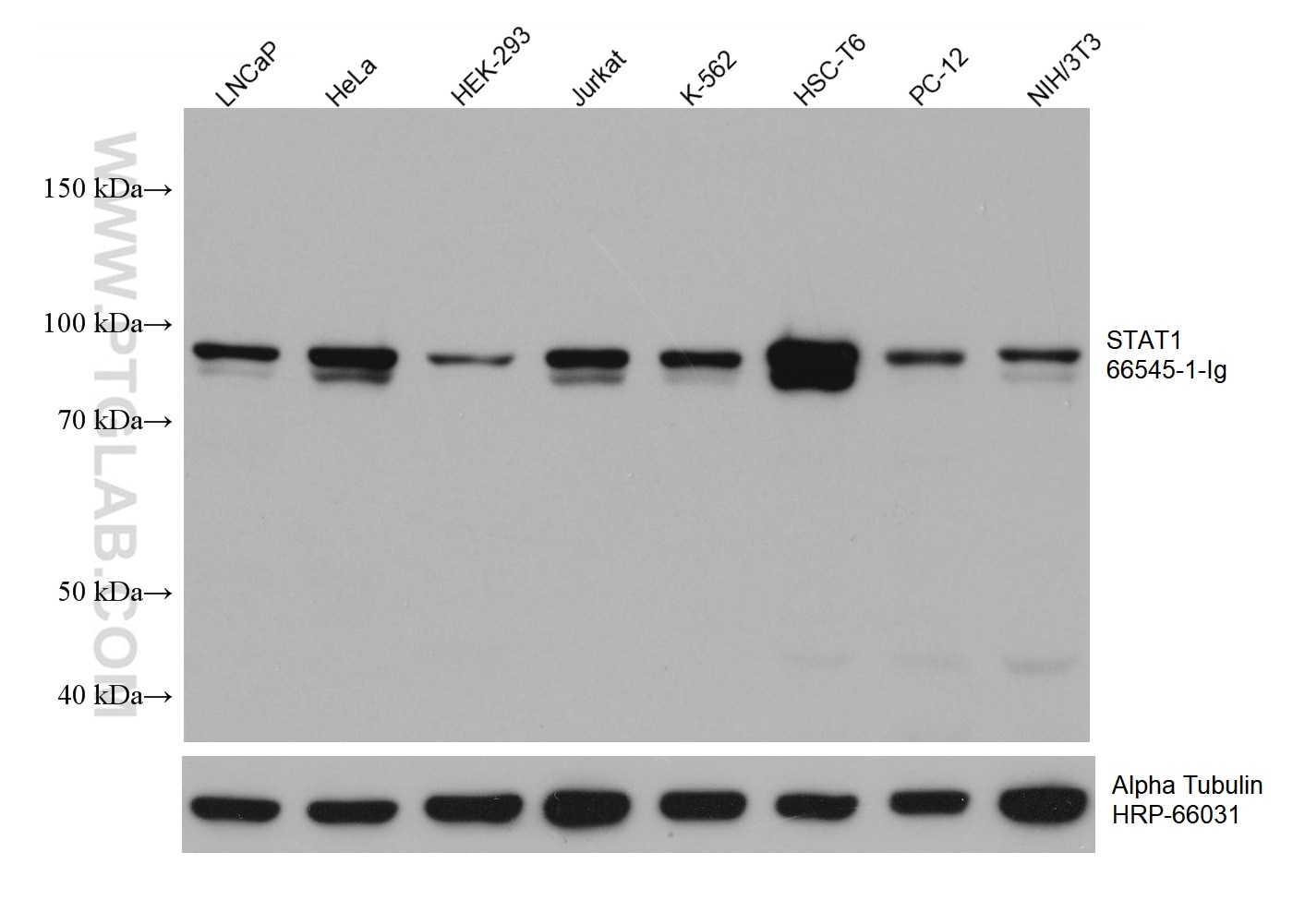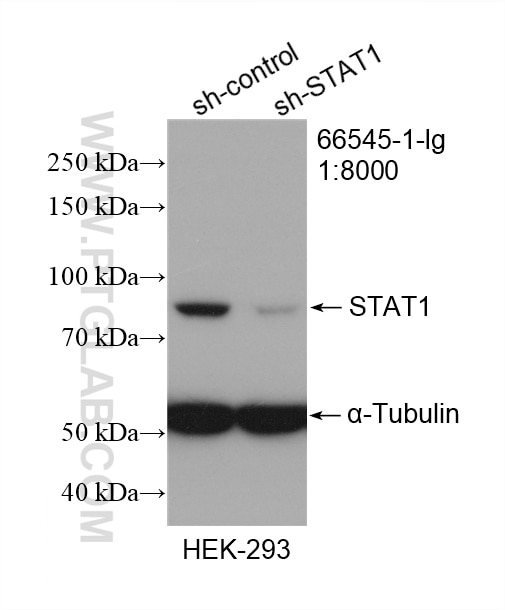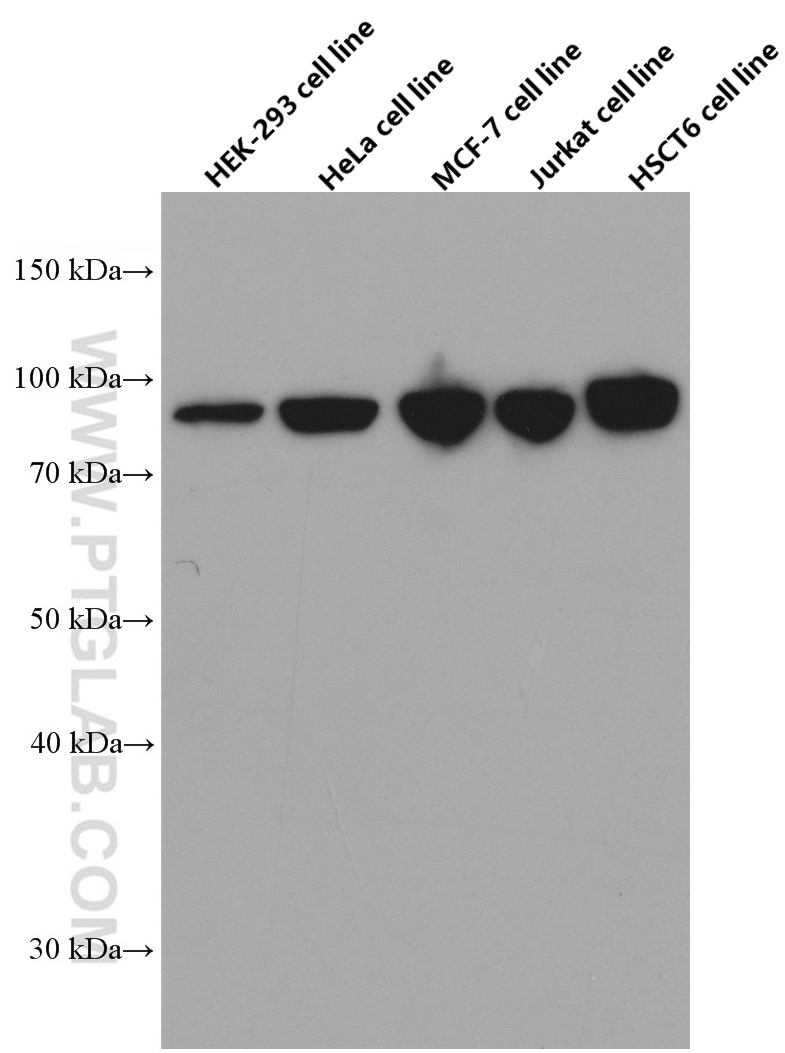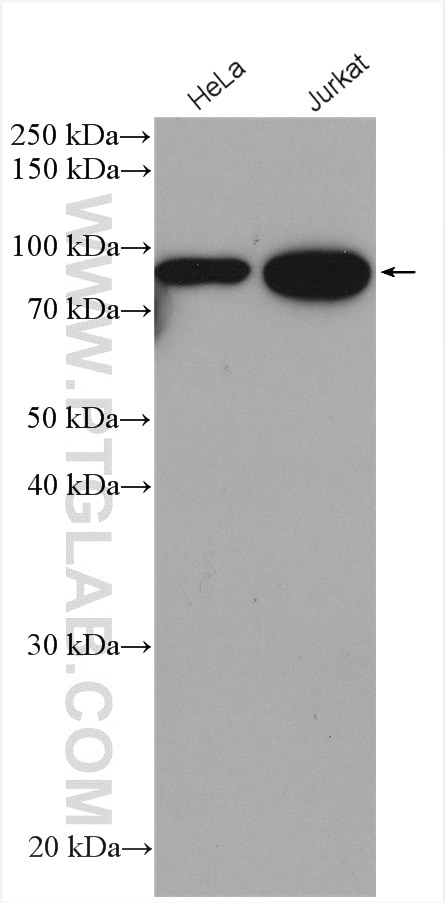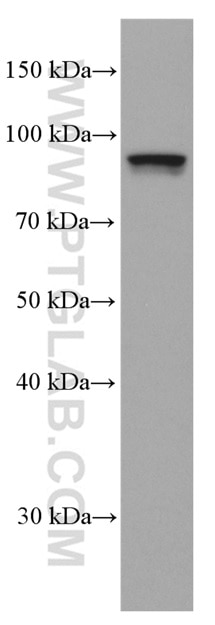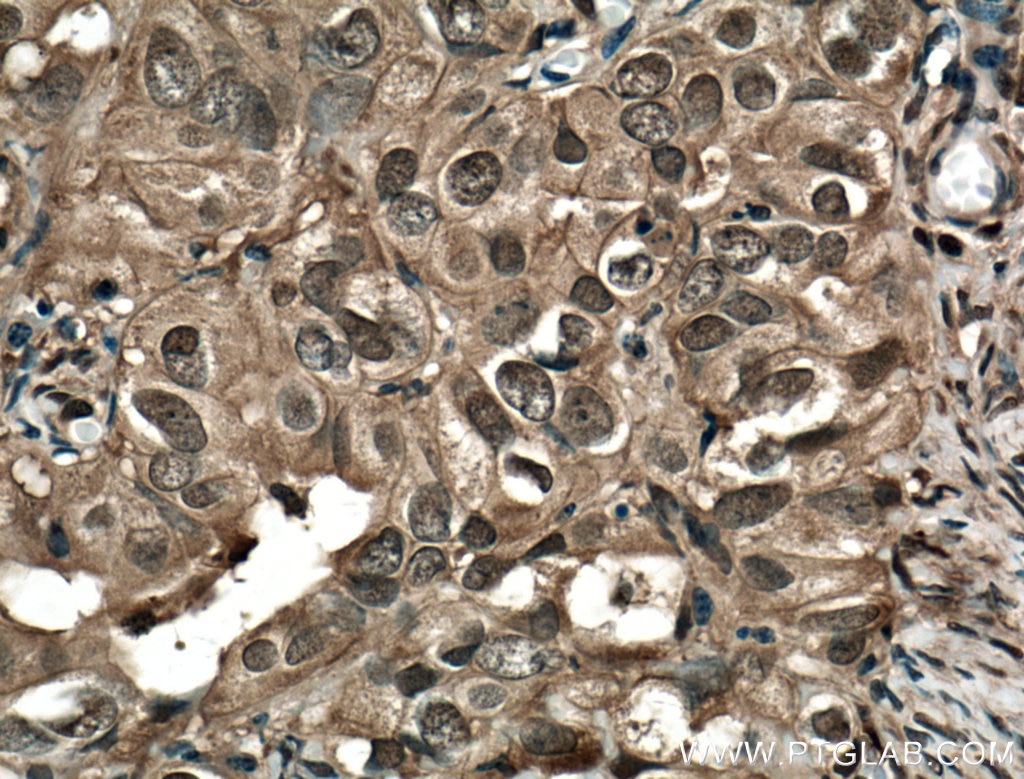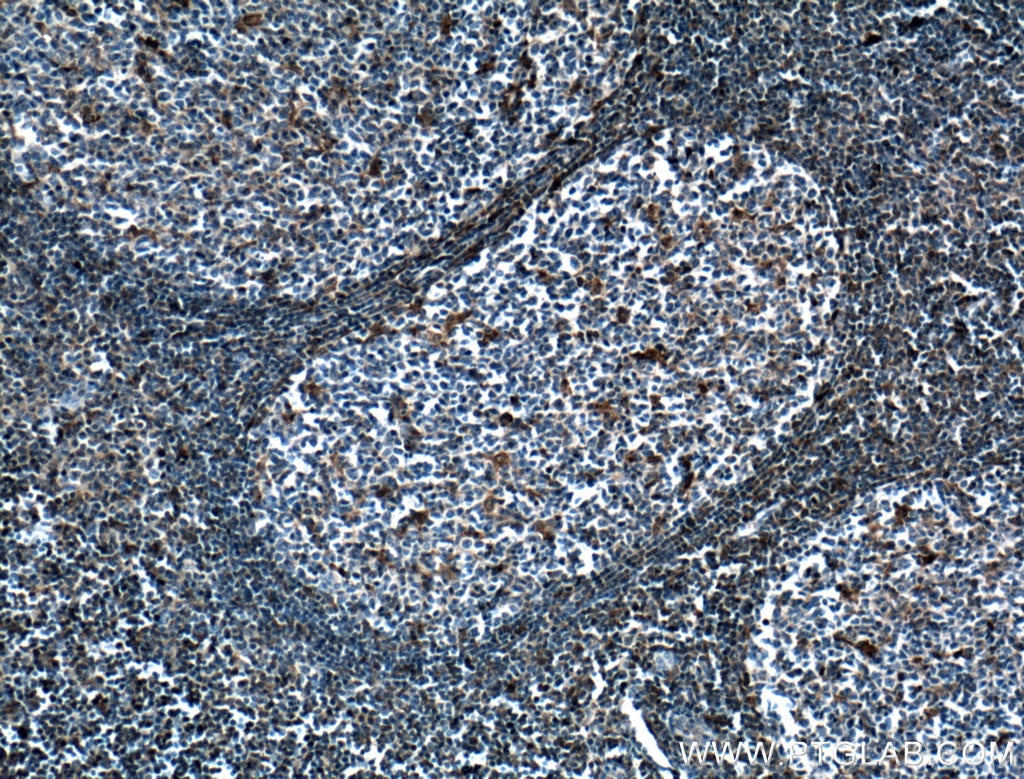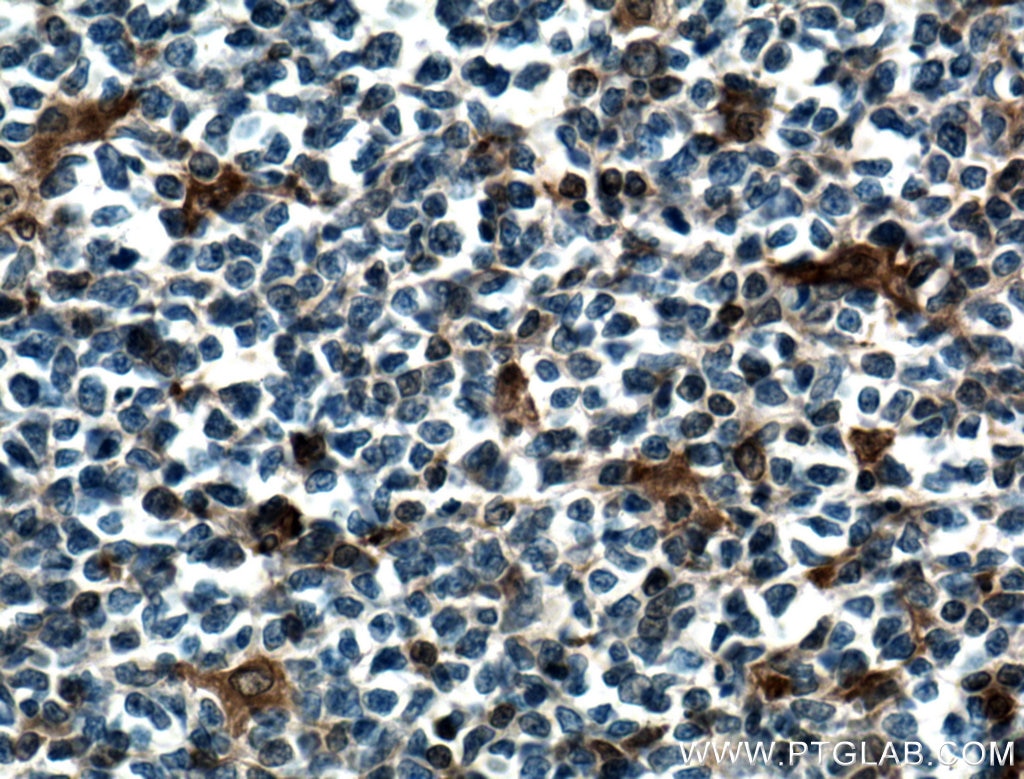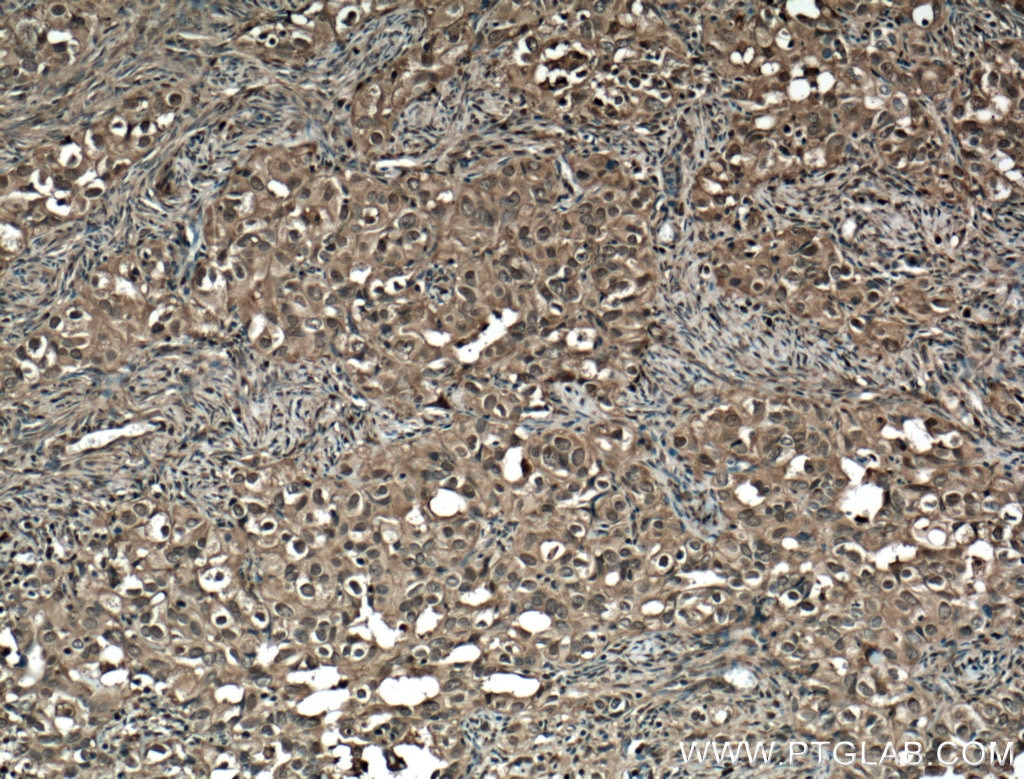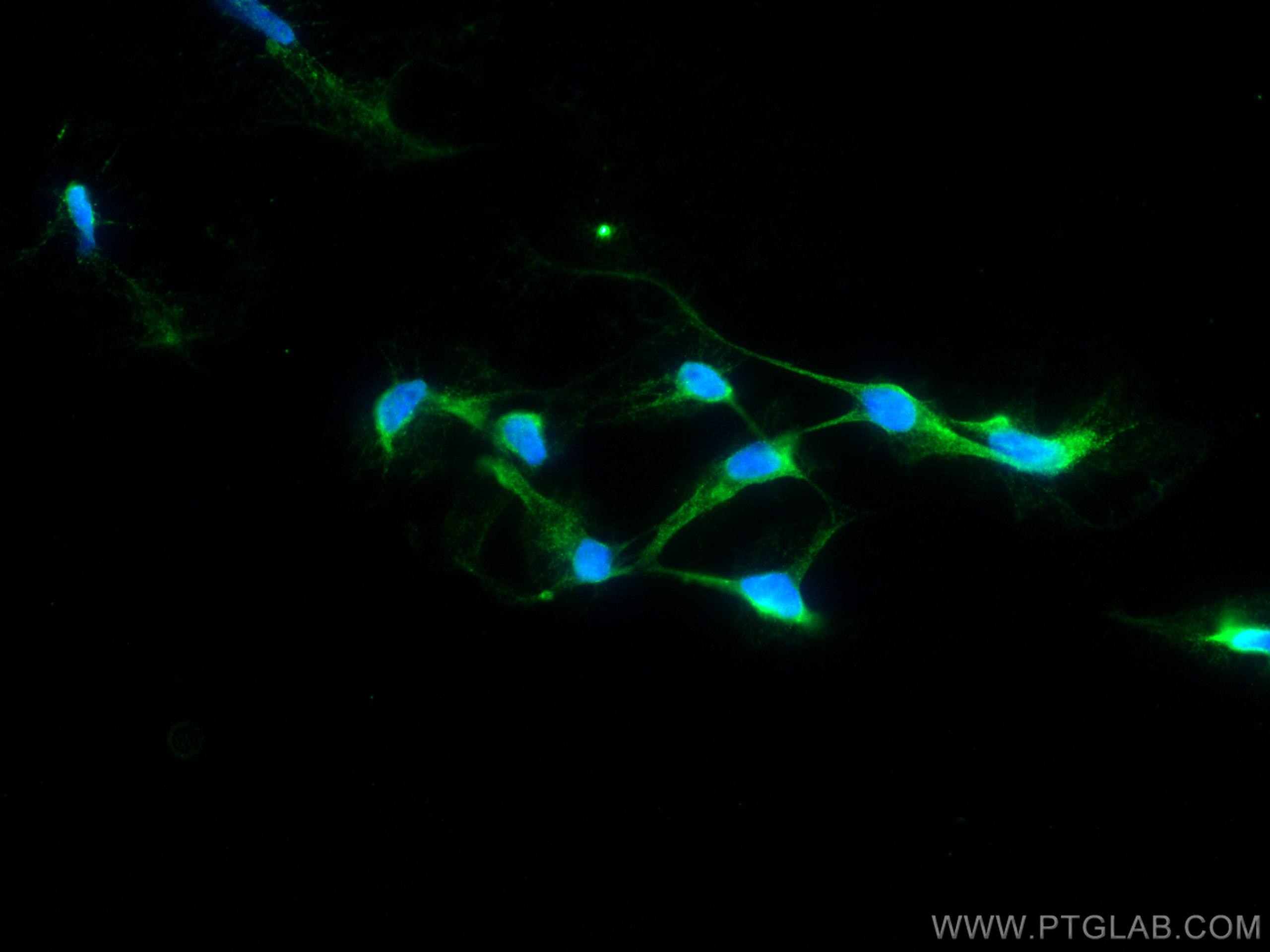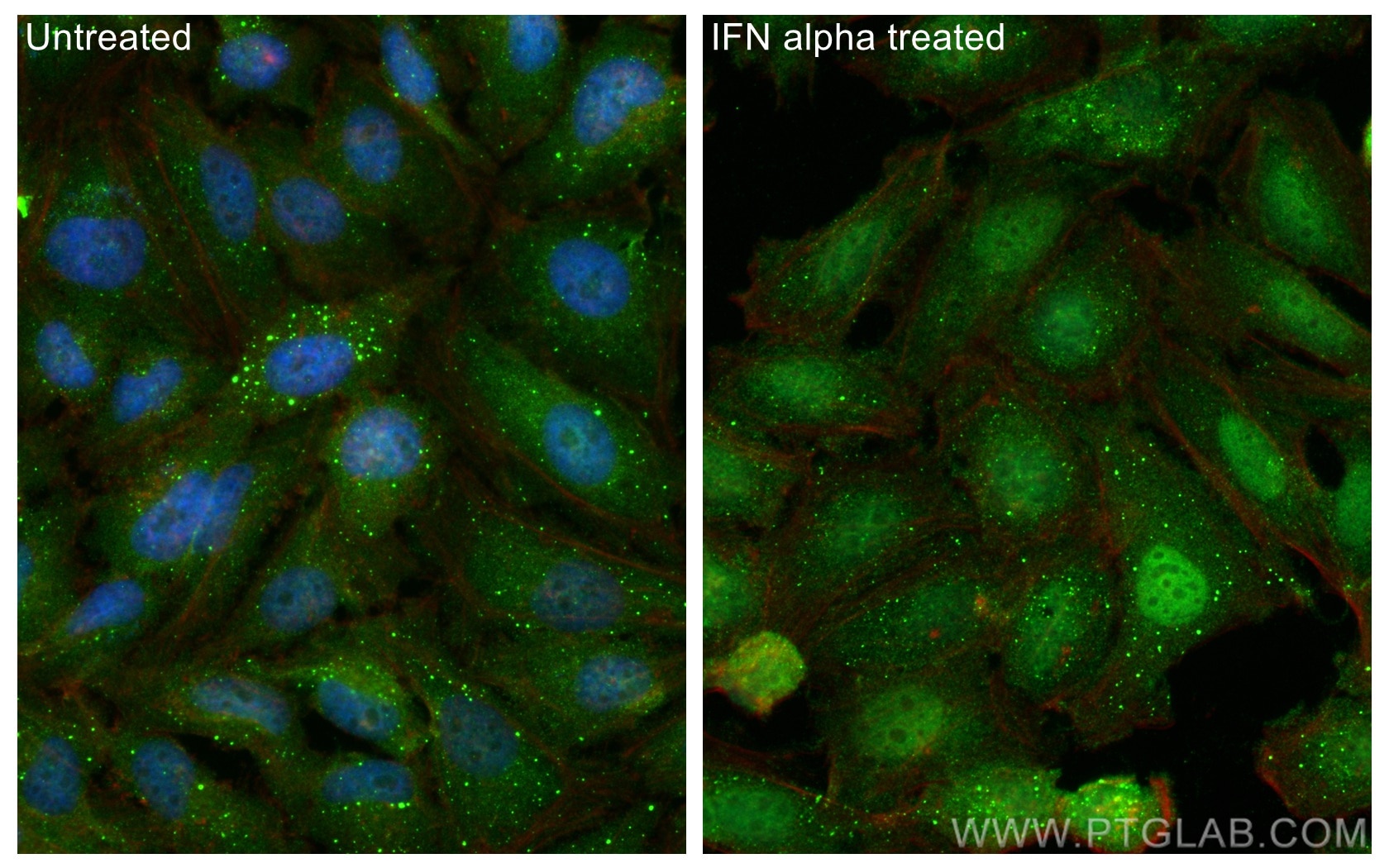- Phare
- Validé par KD/KO
Anticorps Monoclonal anti-STAT1
STAT1 Monoclonal Antibody for WB, IHC, IF/ICC, Indirect ELISA
Hôte / Isotype
Mouse / IgG2a
Réactivité testée
Humain, rat, souris
Applications
WB, IHC, IF/ICC, Indirect ELISA
Conjugaison
Non conjugué
CloneNo.
1F7C6
N° de cat : 66545-1-PBS
Synonymes
Galerie de données de validation
Informations sur le produit
66545-1-PBS cible STAT1 dans les applications de WB, IHC, IF/ICC, Indirect ELISA et montre une réactivité avec des échantillons Humain, rat, souris
| Réactivité | Humain, rat, souris |
| Hôte / Isotype | Mouse / IgG2a |
| Clonalité | Monoclonal |
| Type | Anticorps |
| Immunogène | STAT1 Protéine recombinante Ag0199 |
| Nom complet | signal transducer and activator of transcription 1, 91kDa |
| Masse moléculaire calculée | 83 kDa |
| Poids moléculaire observé | 84 kDa |
| Numéro d’acquisition GenBank | BC002704 |
| Symbole du gène | STAT1 |
| Identification du gène (NCBI) | 6772 |
| Conjugaison | Non conjugué |
| Forme | Liquide |
| Méthode de purification | Purification par protéine A |
| Tampon de stockage | PBS only |
| Conditions de stockage | Store at -80°C. 20ul contiennent 0,1% de BSA. |
Informations générales
What is the molecular weight of STAT1? Are there any isoforms of STAT1? Is STAT1 post-translationally modified?
The molecular weight of STAT1 is 91 kDa for full-length STAT1α and 84 kDa for STAT1β, which is devoid of the C-terminal activation domain (PMID: 1502203). Phosphorylation of STAT1 regulates STAT1 activity. Phosphorylation of Tyr701 by Janus kinases (JAKs) triggers STAT1 homo- and hetero-dimerization with other STAT family members and also causes nuclear translocation, while phosphorylation of Ser727 is needed for full activation (PMID: 10851062). STAT1β lacks Ser727 and has therefore been considered to be inactive or acting in a dominant negative manner to STAT1α, although it has been further shown to be capable of transcription activation in vivo (PMID: 24710278).
What is the subcellular localization of STAT1?
STAT1 is present in the cytoplasm and in the nucleus. Translocation of STAT1 from the cytoplasm to the nucleus is required for its regulation of gene expression and is dependent on phosphorylation (see above). However, low levels of unphosphorylated STAT1, often referred to as U-STAT1, can also be found in the nucleus, where U-STAT1 regulates the stability of heterochromatin by binding to chromatin in monomeric or dimeric states (PMID: 18840523).
What is the tissue expression pattern of STAT1?
STAT1 is ubiquitously expressed.
